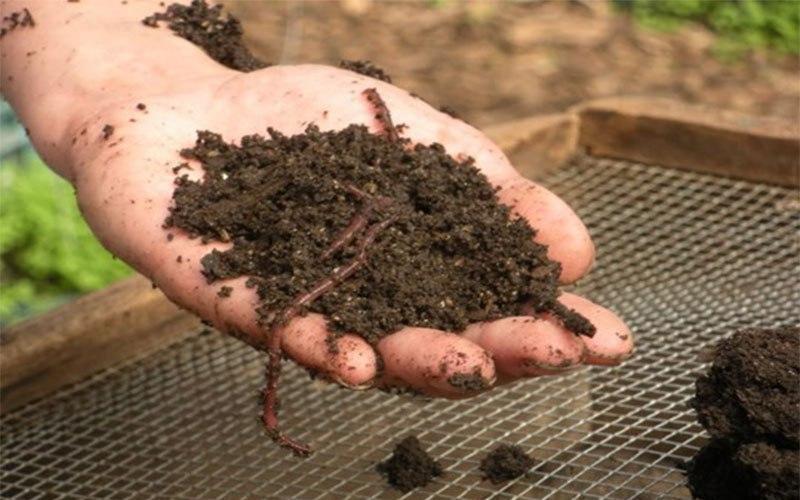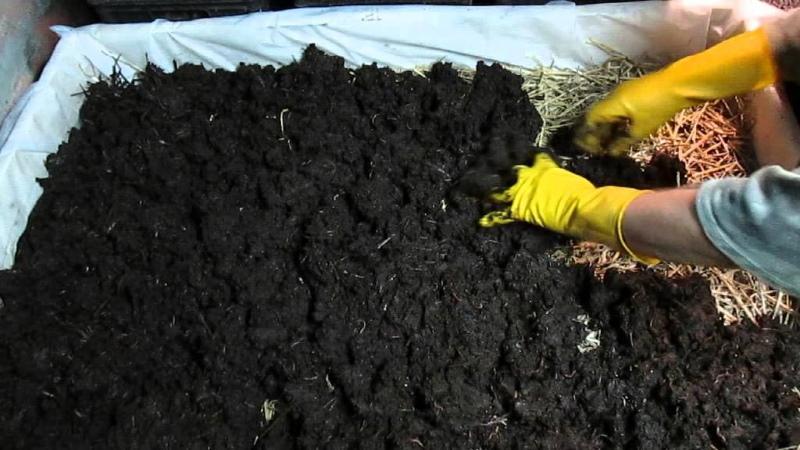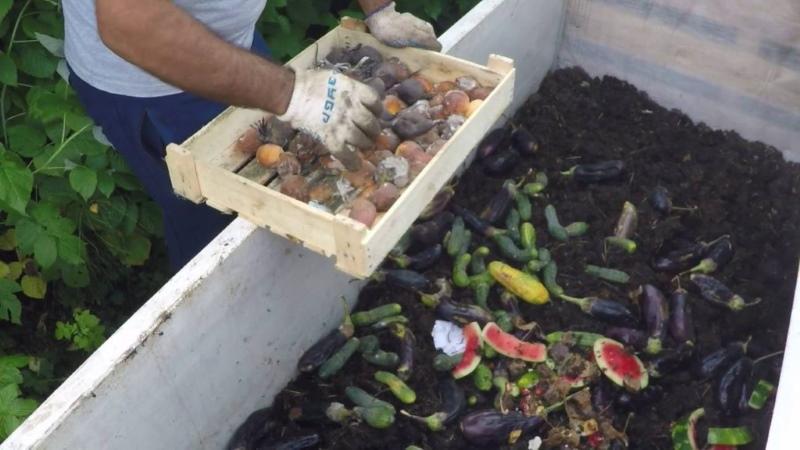Environmentally friendly fertilizer biohumus - home production

For the active growth of any plant, especially at the beginning of the growing season, organic matter is needed. You can significantly increase its value and chemical composition with the help of earthworms. As a result of their processing of organic fertilizers, biohumus is obtained, the production of which at home will help to reduce costs. It is much more profitable for gardeners and truck farmers to master this simple task than to buy a nutritious substrate and organic matter for their plants every year.
The advantage of vermicompost, as vermicompost is also called, is not only in its ecological composition and safety. In fact, it is not even soil. And a balanced fertilizer with a higher concentration of trace elements compared to other organic matter. Worms process compost, simultaneously enriching it with useful substances and disinfecting it. Vermicompost can be combined with any fertilizers, while it is very moisture-absorbing. Plants assimilate substances released by vermicompost faster, which means they develop faster and get sick less often. And even the yield is higher than when using other types of dressings.
Vermicompost - home production

- substrate - compostacting as a breeding ground for worms where they will live;
- and directly the worms themselves (better than special ones, not just earthworms, although this option is also possible).
How to make compost
 For the substrate, compost is used that has passed the heating stage for 2 weeks. Put in the compost heap:
For the substrate, compost is used that has passed the heating stage for 2 weeks. Put in the compost heap:
- one share of organic waste (tops, vegetable and fruit kitchen cleaning, fresh horse manure or fermented poultry);
- the same amount of leaves or hay / straw, or rotted sawdust;
- some sand (no more than 5% of the total).
Then this mixture is left to warm up or lime and peat are added to accelerate heating (2% of the total).
Which worms are better to use
 For every square meter, it is desirable to populate at least 700 worms, but better up to 1500 individuals. It is advisable to purchase a special variety that is used in vermicultivation. The most popular are the California worms. They can recycle compost all year round. If only seasonal work is planned, then you can purchase Prospectors worms. They hibernate for the winter, although they will cost more.
For every square meter, it is desirable to populate at least 700 worms, but better up to 1500 individuals. It is advisable to purchase a special variety that is used in vermicultivation. The most popular are the California worms. They can recycle compost all year round. If only seasonal work is planned, then you can purchase Prospectors worms. They hibernate for the winter, although they will cost more.
The only drawback of Californian worms is their exceptional thermophilicity. For the winter, they must be taken indoors or the compost heap should be well insulated.
Biohumus - home production and its subtleties
 The container in which the compost is located must be closed so that the worms do not escape, but not completely.Leave openings for air. And be sure to shade from the sun - the worms are afraid of it. If vermicompost is to be produced in tight boxes, the holes should also be at the bottom, so that residents do not die from excess moisture.
The container in which the compost is located must be closed so that the worms do not escape, but not completely.Leave openings for air. And be sure to shade from the sun - the worms are afraid of it. If vermicompost is to be produced in tight boxes, the holes should also be at the bottom, so that residents do not die from excess moisture.
And if you put a pallet under the box, then you can collect the flowing liquid. It is called vermicelli and is a valuable liquid plant food.
Every 10 days, the worms need to be fed by adding a layer of compost. And maintain a moisture level in the substrate of at least 70%, for which purpose it is regularly moistened. In 5 months the worms will do their job, and the vermicompost can be collected. In order not to choose it together with the "hard workers", it is recommended to postpone the next meal for a couple of days. And then put a box with holes with a new portion of compost in the composter. Hungry worms will crawl onto food, and they can be relocated to a new place. The finished vermicompost is either dried or left to freeze in winter, and then it will be free-flowing and loose.